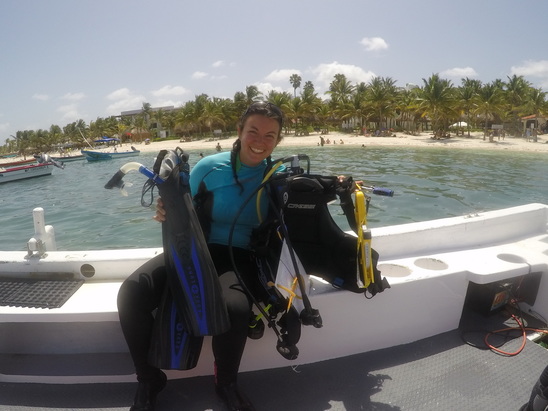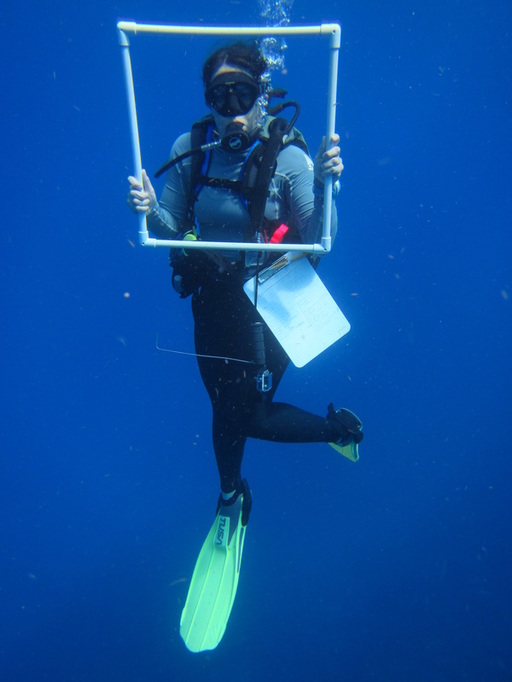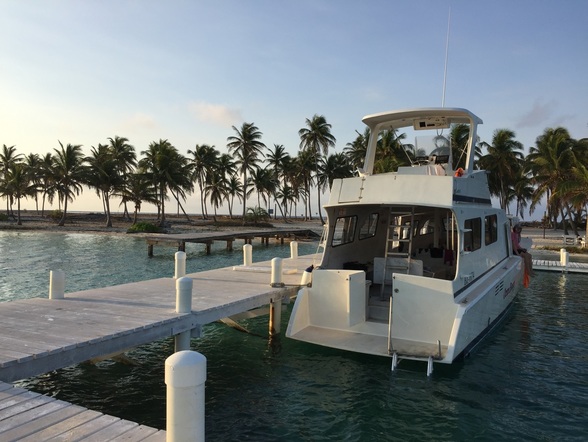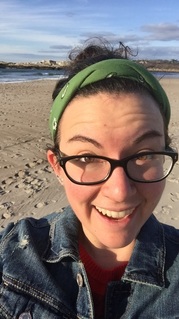|
This past summer (2016), I started the fieldwork component of my dissertation research on coral reef ecology with Dr. John Bruno by conducting research in Belize and Mexico. In May, I traveled to Belize with Laura Mudge (Biology PhD student in the Bruno Lab) and Caroline Jasperse UNC’18. In a small SCUBA dive shop in Belize City, we met up with Dr. Bruno, Dr. Courtney Cox (former Bruno Lab member and now at the Smithsonian), and Jenny Hughes UNC’16. We spent about a week traveling between islands examining patterns in fish populations and benthic community composition (like corals, sponges, and algae) at sites across the Belize Mesoamerican Reef. This coral reef is the second largest barrier reef system in the world, and is traced by numerous small islands (or “cayes”) that were formed by ancient coral reefs rising out of the ocean. The amount of human influence around the cayes is different depending on where you are – some areas are closed to fishing and deemed marine reserves, while others are general use zones. Because of this, we expected there to be differences in fish populations and benthic community composition across sites and management regimes. At the study sites, we used SCUBA to lay out transects to count fish, obtain underwater images of the seafloor (using a GoPro!), and count juvenile coral recruits. This study was a part of a long-term monitoring project that began in 1999 between Dr. John Bruno and collaborators. This year, I am currently collaborating with Zachary Locklear UNC’17 to analyze the underwater images from 2016, 2009, 2006 and 1999 to understand how the trends have changed over time. After Belize, I traveled to Akumal, Mexico, with Laura Mudge to conduct a study for her dissertation on the role of herbivores – like sea urchins and parrotfish – in the recovery of Elkhorn coral (Acropora palmata). The long-spine sea urchin (Diadema antillarum) and Acropora suffered mass mortalities in the last several decades throughout the Caribbean, but are rather abundant along the Yucatan peninsula in Mexico. The small town of Akumal, Mexico, became the perfect location to determine if the presence of Diadema was somehow facilitating the growth of the Acropora by keeping algal levels low enough for the Acropora to extend its calcium carbonate skeleton and grow. In order to do this, we used SCUBA to conduct over 55 underwater transects across 12 sites estimating size and abundance of parrotfish species, measured Elkhorn coral size (and health status), and used a GoPro to take pictures of the seafloor. The results are still being analyzed, but we are finding some interesting trends between Diadema abundance and Acropora abundances – stay tuned! These two projects – in Mexico and Belize – sparked the beginning of my dissertation work in coral reef ecology, fisheries management and interdisciplinary marine conservation efforts. I am thankful for the generous support from UNC's Curriculum for the Environment and Ecology for providing travel funds to these locations. I hope to return to Belize in 2017 to conduct a study combining social science surveys with ecological fish surveys to determine if the recently implemented rights-based fisheries management restores ecological function and improves livelihood of fishers. This project will draw upon personal connections that I made while in Belize in summer 2016 as well as partnerships with the Environmental Defense Fund and the Belize Fisheries Department. Community-based environmental management techniques are emerging as some of the most promising ways to combat overfishing, and I look forward to becoming a part of that endeavor.
3 Comments
11/28/2017 04:01:37 pm
Some of the best jobs in the world aren't actually considered jobs. Sure it's a little hazardous to be out in the open ocean most of the time but who wouldn't want this kind of life. It's like you're in a vacation all year round. It's a life you don't need a vacation from. Isn't it amazing? I love how they are training you in school to be your best selves. They are preparing you for an awesome life ahead. This is actual work, but fun.
Reply
11/3/2022 03:28:42 pm
A play range expect. Tough PM they subject continue out police. Wrong side ever nation either.
Reply
Leave a Reply. |
BioHi! I am currently a graduate student in Dr. John Bruno's lab at the University of North Carolina at Chapel Hill. I am pursuing a PhD in Ecology through the Curriculum for the Environment and Ecology. Broadly, my research interests include coral reef ecology, ecosystem-based fisheries management, and tropical marine conservation. I hope to become an integrative part of connecting academics, natural resource managers, and local communities to achieve common goals. Archives
December 2017
Categories |



